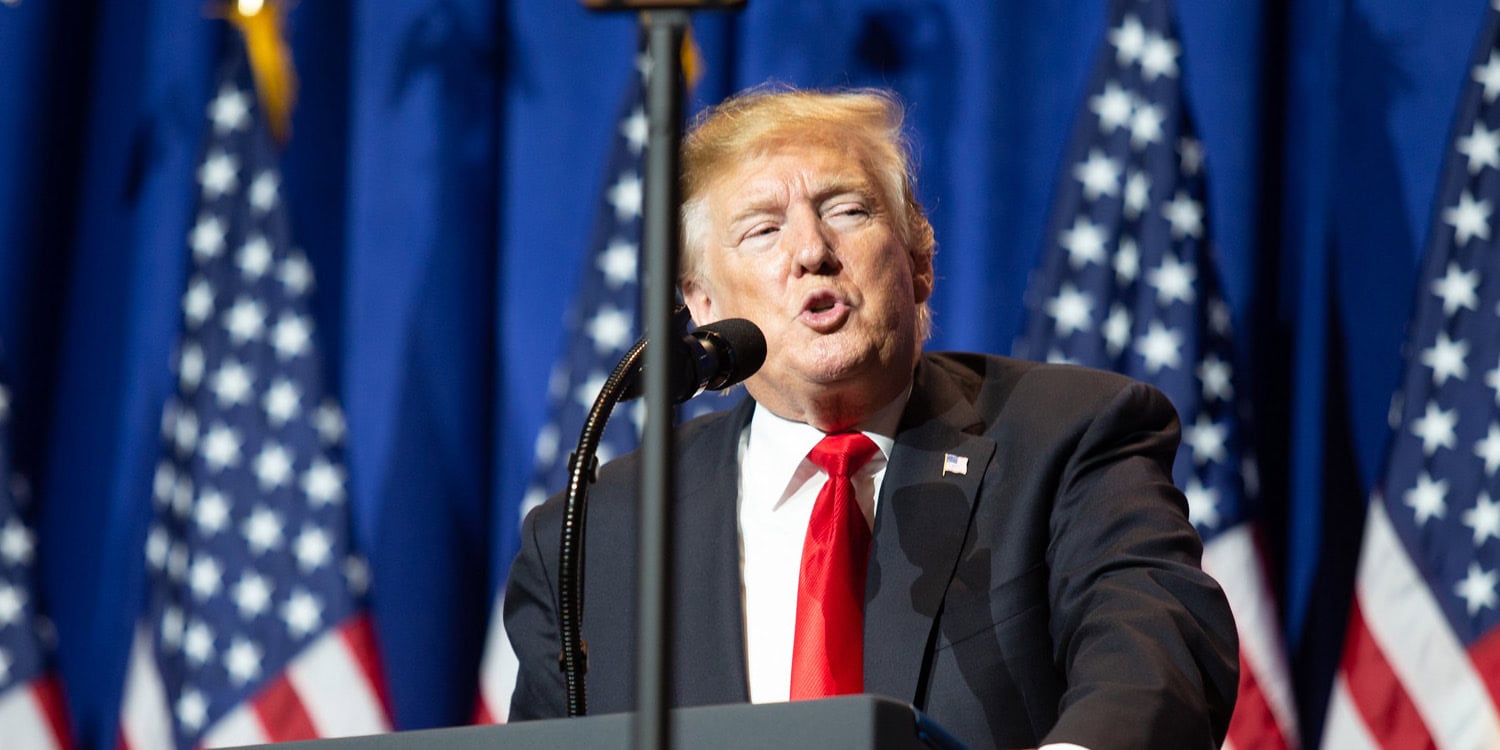Does Donald Trump speak differently from other modern U.S. presidents? A new study in PNAS Nexus suggests he does. By applying machine learning to a vast array of speeches—from debates to campaign rallies and State of the Union addresses—the team found that Trump’s rhetoric is distinguished by short, direct sentences and a notably antagonistic tone, especially toward opponents. The study’s AI-driven analysis highlights Trump’s unique style, setting him apart from other presidents, both Republican and Democratic.
The study was inspired by questions around whether presidents speak in ways that can be noticeably unique and how those differences might reveal themselves across various speaking contexts. Presidential speech is one of the most direct ways a leader connects with the public and influences perceptions of policies and opponents. The researchers wanted to see if modern presidents’ language could be quantitatively analyzed to reveal distinct styles, and whether those styles could indicate varying levels of unity or division in their messaging.
“We have been interested in how large language models can help us understand and quantify presidential discourse. One of the salient phenomena is the uniqueness of Trump’s speeches, and this work allows us to answer this question quantitatively,” explained study author Chenhao Tan, an assistant professor at the University of Chicago and director of the Chicago Human+AI lab.
To study this, the researchers analyzed a range of texts, including 35 presidential debate transcripts, 67 State of the Union addresses, and 187 campaign speeches from presidents since 1960. By examining these various types of speeches, they ensured that each president’s style was assessed both in structured, formal contexts and in more flexible, high-stakes debate settings.
A central aspect of the study was the creation of a new “uniqueness” metric, developed using a machine learning approach called large language modeling, which identifies patterns in language usage. For this metric, the researchers trained language models on specific datasets for each type of speech—debates, State of the Union addresses, and campaign events—enabling the model to detect how likely it was for a given phrase to be unique to one president compared to others.
Essentially, this metric captured the predictability of certain words and phrases based on the speaker. The greater the variation from typical word patterns, the higher a speaker’s uniqueness score. For instance, if President Trump used language structures or phrases that other presidents were unlikely to use, his score for uniqueness would be higher, as was often the case in the findings.
The researchers also introduced a divisiveness lexicon, a list of 178 words identified as commonly used to insult, discredit, or delegitimize opponents. This list was developed through an initial selection of divisive words, which were then reviewed by multiple researchers to confirm their relevance to political speech. Words like “corrupt,” “stupid,” and “disgrace” were included in this lexicon, which was then applied to each presidential dataset to measure the frequency of divisive language.
The researchers found that Trump’s language was both highly unique and divisive, setting him apart from other modern presidents in significant ways. Trump’s use of short, direct sentences was consistent across all categories of speech examined—debates, campaign speeches, and State of the Union addresses. Unlike the more complex or measured phrasing typical of many other presidents, Trump exhibited more simplistic and repetitive language.
One striking observation was that Trump’s speech patterns were not only distinct compared to Democratic presidents but also showed significant divergence from his fellow Republicans. This finding was unexpected; traditionally, presidential speech within a party shows relatively minor stylistic differences compared to cross-party language.
However, the analysis found that Trump’s language style was a larger outlier within his own party than the differences typically observed between Republicans and Democrats overall. This suggests that Trump’s rhetorical approach represents a unique brand of discourse, diverging from standard Republican or Democratic norms alike.
“We were expecting Trump to not stand out in State of the Union speeches, since these speeches are more standard,” Tan told PsyPost. “However, he is still very different in these speeches. I was also surprised by how different Trump is from other Republicans.”
Trump also mentioned his adversaries more often than his predecessors. But it wasn’t only the quantity of these references that stood out; Trump’s language also contained unique descriptors when he talked about opponents. This uniqueness was demonstrated through a lower degree of overlap between the adjectives Trump used and those typically used by other presidents to describe their rivals.
For instance, while other presidents might have relied on more neutral or policy-focused terms, Trump frequently employed emotionally charged descriptors that cast his opponents in a particularly negative light. This approach made his language about opponents distinctly personal and combative, emphasizing a style that separated him from both Republican and Democratic predecessors.
“Donald Trump’s political rhetoric is unique among modern presidents and is defined, in part, by his use of antagonistic language, particularly when directed at political opponents,” Tan said.
Although the findings offer insights into Trump’s rhetorical style, the researchers acknowledged some limitations in their approach. The campaign speech data, for example, only cover presidents from recent election cycles, making comparisons with earlier presidents limited. Moreover, the study focused solely on public speeches, excluding social media posts, which play a major role in modern political communication.
“We were not able to get a lot of high-quality data for campaign speeches, especially for early presidents,” Tan noted. “I think that our divisiveness lexicon, while novel, may require more iterations to ensure that it captures the divisiveness of a speech accurately. The nice thing is that these approaches based on counting words are interpretable.”
Despite these limitations, the study offers a comprehensive look at the unique nature of Trump’s speech and how it differs from other presidents, underscoring a shift toward a more confrontational style in presidential discourse.
“We hope to help the public make informed decisions in democratic processes,” Tan said. “In fact, we just built a website to show some example summaries about political platforms: https://chicagohai.github.io/election-nlp/.”
The study, “Quantifying the uniqueness and divisiveness of presidential discourse,” was authored by Karen Zhou, Alexander A Meitus, Milo Chase, Grace Wang, Anne Mykland, William Howell, and Chenhao Tan.




